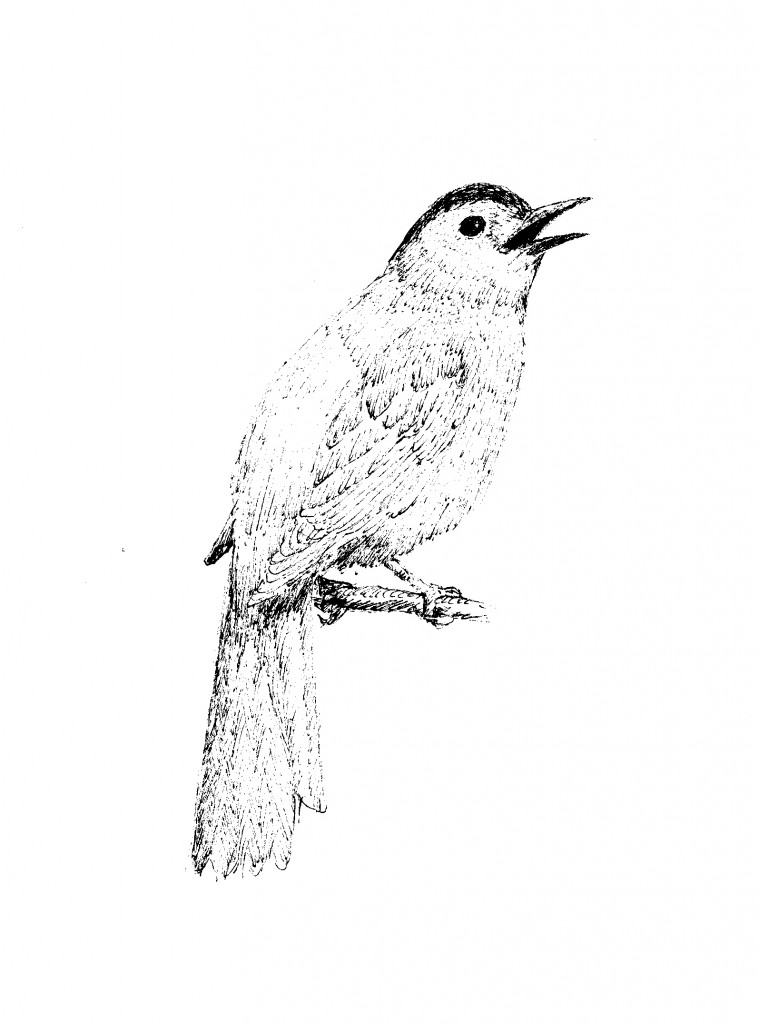This column was published this past week in the Cape Codder and has elicited a huge response from my readers. Since it is not available online I am posting it here.
Nature’s Ways, 6-29-12
By Mary Richmond
Ode to a Catbird
Way back when, in 1964 when I turned 10 to be exact, my grandmother gave me a beautiful hard bound copy of John K. Terres collection called “The Audubon Book of True Nature Stories.” I had read all the Thornton Burgess stories and any other nature stories I could find but this was my first book of “grown up” nature stories and I read it over and over. It was in these pages that I first met Crip, the brown thrasher from “Crip, Come Home!” that revisited Ruth Rowland Thomas’s home each spring and summer. Like her, I fell in love with him. Crip still carries on from my bookcase in spirit though he himself is long gone.
I have been thinking about Crip and the woman who loved him this week for I have my own Crip of sorts. Mine is a gray catbird and to be fair, I have no way to be sure it is the same bird I see each spring but each year for the last seven years a catbird arrives each spring and chases the resident winter mockingbird from its preferred territory and begins to sing. It usually doesn’t take long for him to attract a mate for he has some prime real estate safe in a holly tree, close to a garden and a feeder and a good supply of fresh water. He’s also quite handsome.

There’s something about a catbird that amuses me, perhaps going back to when, as a child, I would hear them “mewing” in the branches just out of reach of our feisty cat. Even as a youngster I knew the bird was taking a risk mocking a cat like that but in most cases the bird prevailed. It would be years before I realized that the catbird was a successful mimic and could sing its own melodic but often confusing song long after dusk began to creep upon the land. Catbirds come by their mimicry honestly, being related to mockingbirds and brown thrashers.
Here on the Cape catbirds are often among the last songbirds to arrive each spring. A close look at their elegant form will allow you to see their jaunty black cap and the rusty patch beneath their tail. Although they will watch you intently they are often quite shy and they will fly over shrubs and vegetation rather than open areas when given the chance. They will eat many insects, including caterpillars and grubs but especially love fruit so it is no surprise that this one visits my strawberry patch daily. He also hangs out on the oriole feeder, helping himself to both fresh oranges and grape jelly. He looks in the kitchen window at me and over time I have to admit, I have become very fond of this bird. Just a week or so ago I could hear the babies clamoring from the nest in the holly trees and I knew that it wouldn’t be long before there was a catbird crowd at the feeder and in the garden.
The other morning I came running when I heard the jays hollering. We have a colony of half feral cats down the road and sure enough, one was beneath my feeder and it had something in its mouth. I ran out of the house and chased it and it dropped the bird, jumped over the tall fence and was gone. The bird and I stared at each other. It appeared to be my beloved catbird. It had lost its tail but was alive and bright eyed. I reached for it but it flew off, low to the ground without its tail rudder, and disappeared into a neighbor’s yard. I haven’t seen it since.
My yard was silent for hours that day. Late in the day I heard the baby catbirds crying and wondered if it was their mother who had been injured. I have not seen the catbird that lost its tail but I have seen the remaining catbird tend to the young and then bring them to the feeder where they all stare in the window at me while stuffing themselves. I worry about these birds but I also know they will face many challenges besides a cat in the weeks and months ahead.
As I write this a catbird sings from atop a bush outside my window. For now, all is well.
